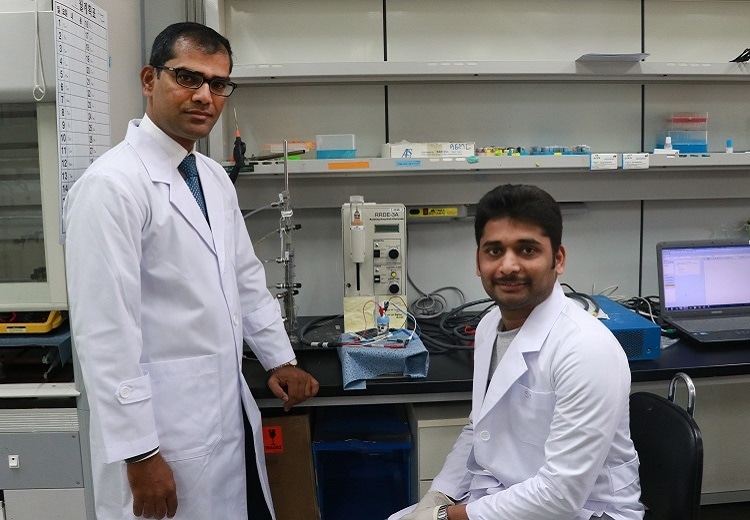Jan 10 2019
As reported by a study published in the Applied Catalysis B: Environmental journal, scientists at Daegu Gyeongbuk Institute of Science & Technology (DGIST) have created nano-catalysts with the ability to bring down the overall cost of clean energy fuel cells.
 Professor Sangaraju Shanmugam (left) and PhD Student Arumugam Sivanantham (right). (Image credit: Daegu Gyeongbuk Institute of Science and Technology)
Professor Sangaraju Shanmugam (left) and PhD Student Arumugam Sivanantham (right). (Image credit: Daegu Gyeongbuk Institute of Science and Technology)
Polymer electrolyte membrane fuel cells (PEMFCs) have the potential to convert the chemical energy generated as a result of the reaction between oxygen and hydrogen fuel into electrical energy. Although PEMFCs look promising as a source of clean energy that is mobile and self-contained—quite similar to the alkaline fuel cells used on the US Space Shuttle—at present, they are dependent on high-cost materials. Moreover, the substances used for the catalysis of these chemical reactions tend to degrade, giving rise to concerns over viability and reusability.
Sangaraju Shanmugam, an energy materials scientist at DGIST, and his colleagues have created durable and active catalysts for PEMFCs, which have the potential to reduce the overall manufacturing costs. The catalysts used were nitrogen-doped carbon nanorods, the surfaces of which contained cobalt nanoparticles and ceria (CeO2), typically carbon nanorods that contain cobalt, nitrogen, and ceria. Ceria is a combination of cerium and oxygen. It is an environment-friendly and inexpensive semiconducting material with exceptional oxygen reduction potential.
The fibers were developed by employing a method called electrospinning, which involves applying a high voltage to a liquid droplet, thereby forming a charged liquid jet that subsequently dries midflight into uniform, nanosized particles. Following the investigation by the researchers, it was confirmed that the cobalt and ceria particles were uniformly distributed in the carbon nanorods and that the catalysts exhibited improved electricity-generating capacity.
It was found that when compared to cobalt-only nitrogen-doped carbon nanorods and platinum/carbon, the ceria-supported cobalt on nitrogen-doped carbon nanorod catalyst was extremely active and durable. They were analyzed by means of two significant types of chemical reactions for energy conversion and storage—oxygen reduction and oxygen evolution reactions.
The team concluded that ceria could be regarded as one of the most promising materials for use with cobalt on nitrogen-doped carbon nanorods to create stable catalysts that have improved electrochemical activity in PEMFCs and related devices.